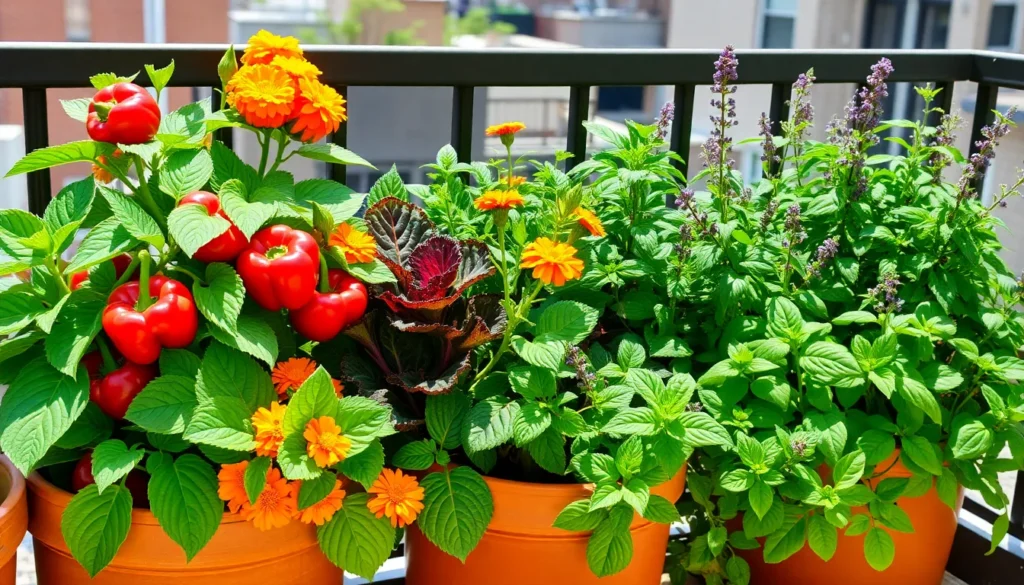Gardening is a delightful pursuit that can transform even the smallest balcony into a bountiful haven of fresh produce. Whether you’re a seasoned gardener looking to expand your horticultural repertoire or a beginner eager to cultivate your first crop, growing vegetables in containers offers a versatile and rewarding gardening experience. It’s not just about saving space; it’s about creating a personalized oasis that nourishes both body and soul, right at your doorstep.
In this article, you’ll discover how container gardening can simplify and enrich your vegetable-growing journey. From selecting the perfect pots to understanding the nuances of soil choice and plant care, we’ll guide you through each step with practical advice and expert tips. Embrace the opportunity to experiment with different vegetables, varieties, and growing techniques tailored to your unique space and climate conditions. By the end, you’ll be equipped with all the knowledge you need to transform your urban or suburban setting into a thriving vegetable garden.
Select Appropriate Container Size
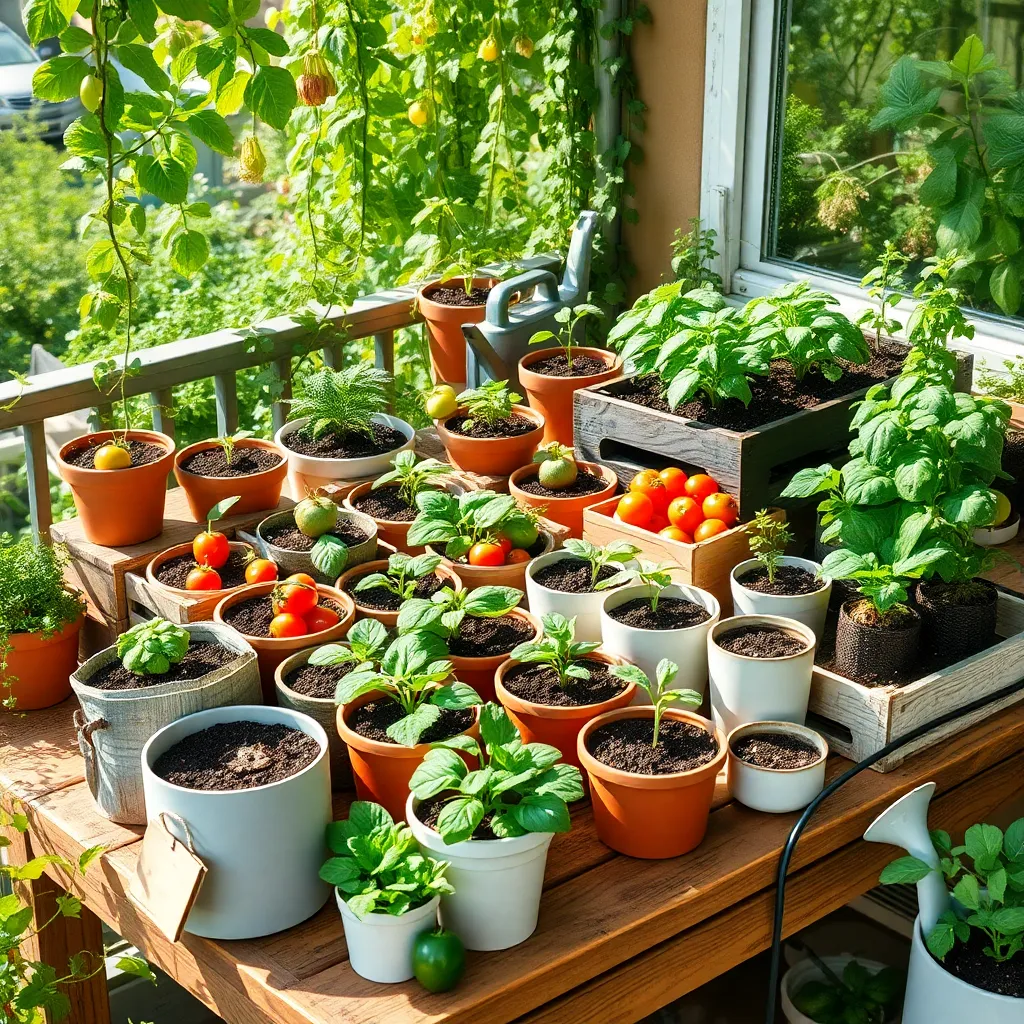
Choosing the right container size is crucial for the success of your vegetable garden. Small containers can restrict root growth, leading to stunted plants and reduced yields, while excessively large containers might lead to waterlogging and root rot.
For leafy greens like lettuce and spinach, containers should be at least 6 to 8 inches deep. This allows enough room for their shallow root systems to expand, ensuring they receive adequate nutrients and water.
When growing root vegetables such as carrots and radishes, opt for containers that are 12 inches deep or more. Deep containers promote straight growth and prevent the roots from becoming deformed due to restricted space.
For larger plants like tomatoes and peppers, a container with a minimum depth of 12 to 18 inches is essential. This provides ample space for their extensive root systems and supports healthy fruit production. Additionally, ensure your container has several drainage holes to prevent water buildup and root disease.
Fill with Quality Potting Mix
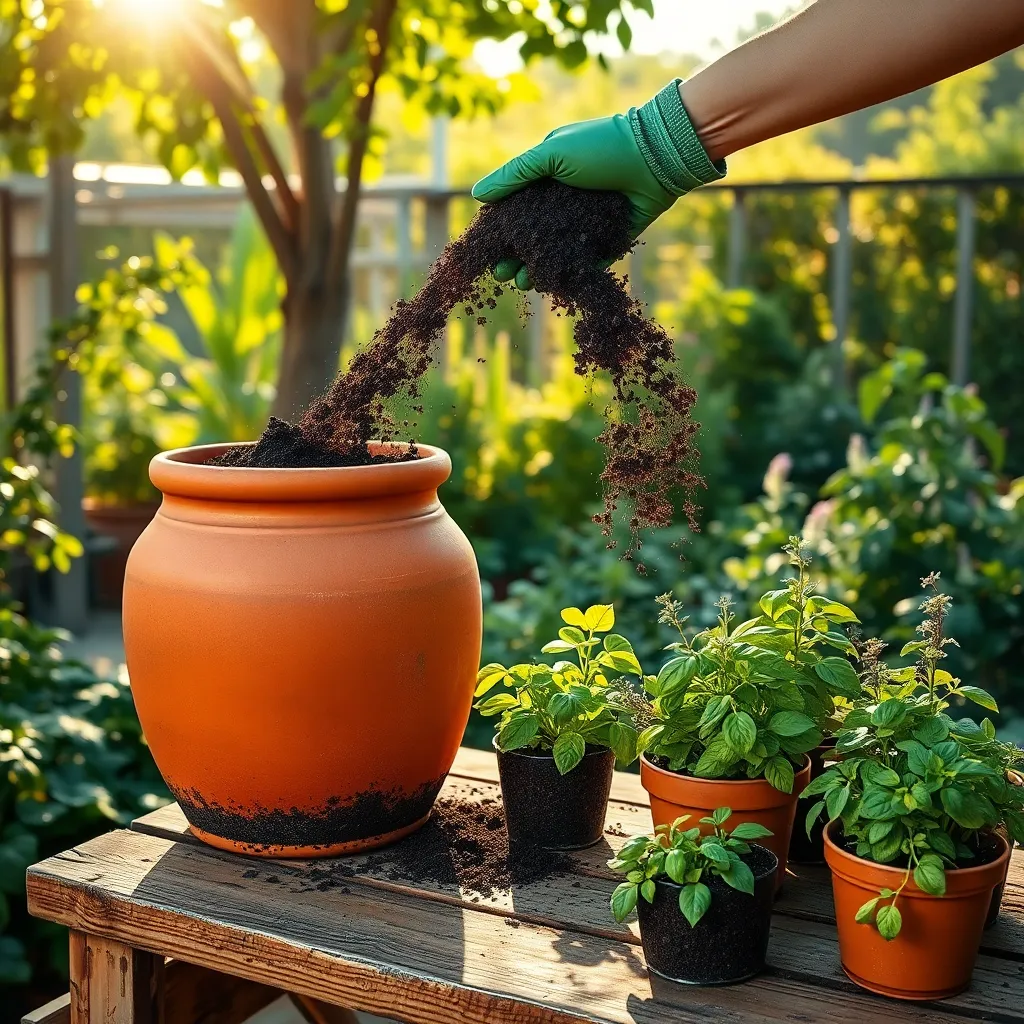
Once you’ve chosen the right container, it’s essential to fill it with a high-quality potting mix. A good potting mix provides the necessary drainage, aeration, and nutrients to help your vegetable plants thrive.
It’s advisable to use a commercial potting mix designed specifically for containers, as these often contain ingredients like peat moss, perlite, and vermiculite. These components ensure that your plants’ roots have access to the right amount of water and air.
For those who prefer a more hands-on approach, you can create your own blend by mixing equal parts of peat moss, perlite, and compost. This homemade mix is not only cost-effective but also allows you to control the quality and nutrient content of the soil.
To further enhance the potting mix, consider adding a slow-release fertilizer to ensure a steady supply of nutrients throughout the growing season. This is particularly important for vegetables in containers, as they can quickly deplete the available nutrients.
Plant Seeds or Seedlings Carefully

When planting seeds or seedlings in containers, it’s crucial to start with a clean, sanitized container to prevent any disease transmission. Ensure your container has adequate drainage holes to avoid waterlogging, which can harm young plants.
Next, decide whether to plant seeds or seedlings based on your vegetable choice and growing conditions. Seeds are often more economical and allow for a wider selection of varieties, while seedlings provide a head start and are less vulnerable to fluctuating conditions.
If opting for seeds, follow the planting depth and spacing recommendations on the packet for best results. Gently firm the soil over the seeds and water them lightly to avoid disturbing them, ensuring even moisture without oversaturating.
When planting seedlings, carefully remove them from their nursery pots, being cautious not to damage the roots. Plant them at the same depth they were growing previously to maintain their stability and encourage healthy growth. Adjust the container placement to provide appropriate light levels, typically requiring 6 to 8 hours of sunlight daily.
Ensure Adequate Sunlight Exposure
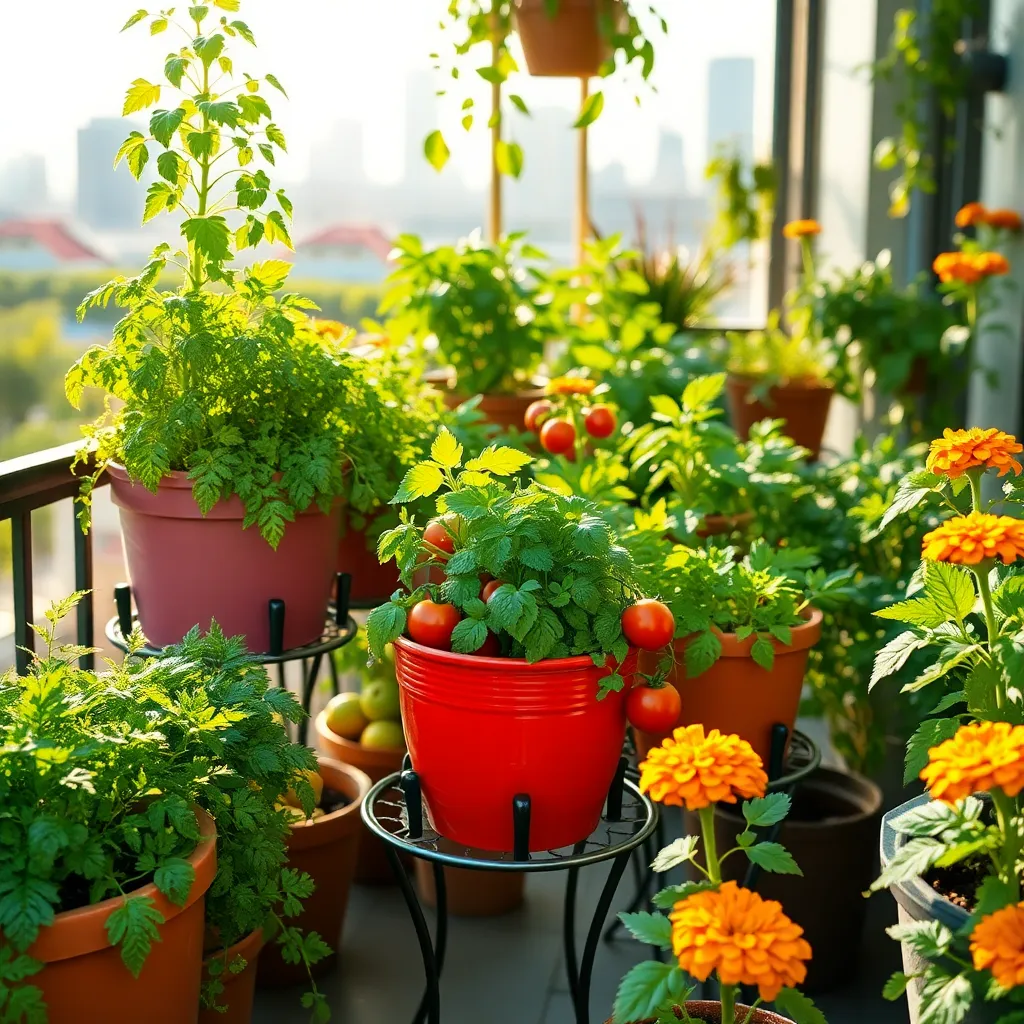
After carefully planting your seeds or seedlings, it’s crucial to ensure they receive adequate sunlight exposure. Most vegetables require at least six to eight hours of direct sunlight each day to thrive and produce a bountiful harvest.
Position your containers in a spot that gets consistent sunlight throughout the day. If your outdoor space is limited, consider using plant caddies or wheeled platforms to easily move your containers to follow the sun.
In urban environments where sunlight can be blocked by buildings, a south-facing balcony or windowsill can provide the best light. Reflective surfaces, such as white walls or light-colored surfaces, can help maximize the available light for your plants.
For those with limited sunny spots, you can supplement natural light with grow lights to ensure your vegetables receive the necessary light intensity. Choose full-spectrum LED grow lights, which mimic natural sunlight and are energy-efficient, to support your plants’ growth.
Water and Fertilize Regularly
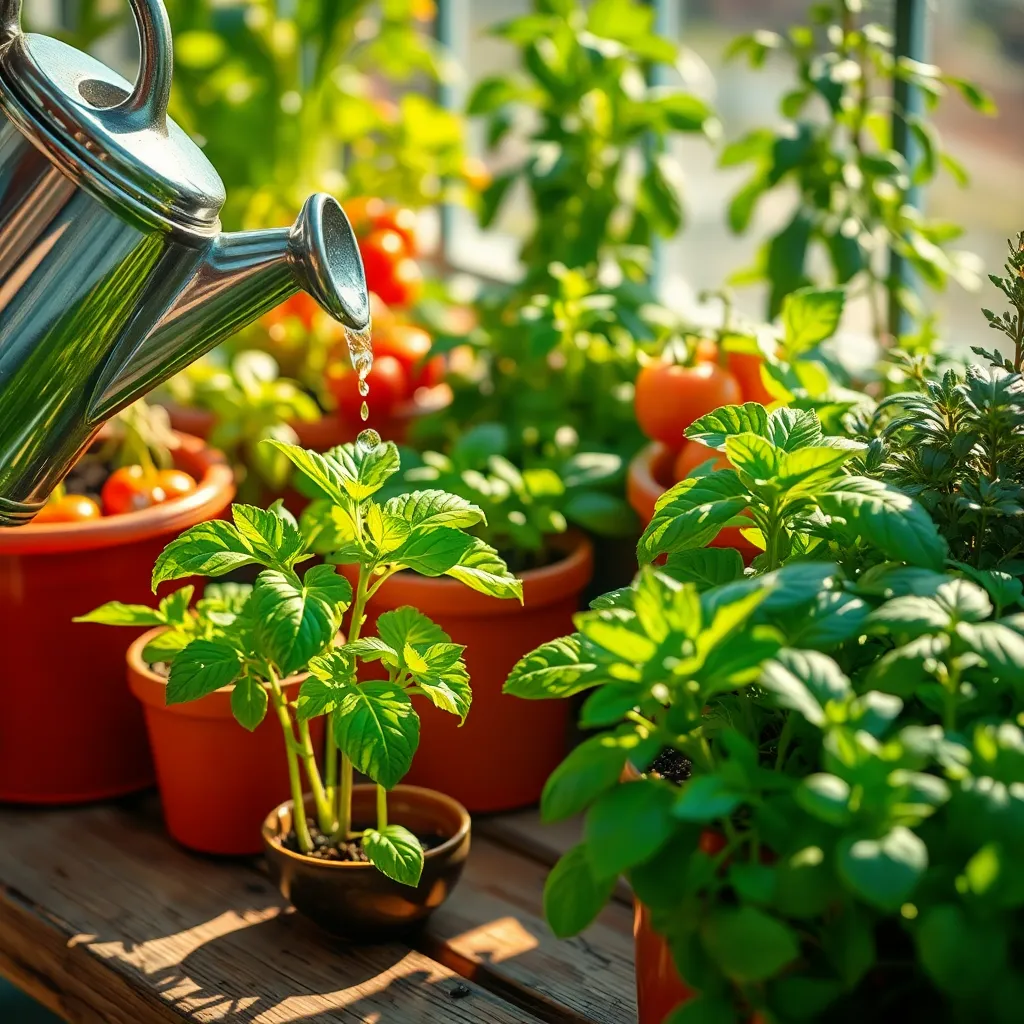
Container gardening requires diligent attention to watering, as plants in pots dry out more quickly than those in the ground. Check moisture levels by sticking your finger about an inch into the soil; if it feels dry, it’s time to water.
Use a watering can with a narrow spout to deliver water directly to the base of the plants, avoiding wetting the foliage. Water until it drains from the bottom of the container to ensure the entire root ball is hydrated, but be careful to empty saucers to prevent root rot.
Fertilizing is crucial for container-grown vegetables, as nutrients are quickly depleted in the limited soil volume. Apply a balanced, water-soluble fertilizer every two weeks during the growing season to maintain nutrient levels.
For more advanced care, consider using a slow-release granular fertilizer mixed into the potting soil at planting time. This provides a steady supply of nutrients over several months, reducing the need for frequent feedings. Adjust the type of fertilizer based on the specific vegetables you’re growing—for example, tomatoes benefit from a fertilizer high in potassium.
Conclusion: Growing Success with These Plants
In wrapping up your journey through the world of container gardening, we’ve explored five essential relationship concepts that can transform your gardening experience: nurturing patience, fostering creativity, embracing adaptability, understanding needs, and celebrating growth. These principles not only cultivate thriving vegetable gardens but also mirror the dynamics of nurturing meaningful relationships. As you embark on this green adventure, take an immediate step by selecting a vegetable you’d like to grow and gather the necessary materials to start your first container garden today.
Remember, just as each plant requires unique care, so do the relationships in our lives. Bookmark this article to revisit these insights whenever you need a reminder of the parallels between your garden and your connections with others. With dedication and love, both your plants and relationships can flourish beautifully. As you nurture your garden, may it inspire you to cultivate deeper, more rewarding relationships that grow stronger over time. Embrace this opportunity to plant the seeds of success in every aspect of your life.

